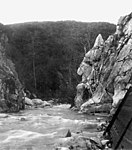Woman's Building (Los Angeles)
1973 establishments in California1991 disestablishments in CaliforniaArt museums and galleries disestablished in 1991Art museums and galleries established in 1973Arts centers in California ... and 11 more
Community centers in CaliforniaContemporary art galleries in the United StatesDefunct companies based in Greater Los AngelesDefunct non-profit organizations based in the United StatesFeminism in CaliforniaFeminist art organizations in the United StatesPerformance art in Los AngelesUniversity and college arts centers in the United StatesWomen's clubs in the United StatesWomen's cultureWomen in Los Angeles
The Woman's Building was a non-profit arts and education center located in Los Angeles, California. The Woman's Building focused on feminist art and served as a venue for the women's movement and was spearheaded by artist Judy Chicago, graphic designer Sheila Levrant de Bretteville and art historian Arlene Raven. The center was open from 1973 until 1991. During its existence, the Los Angeles Times called the Woman's Building a "feminist mecca."
Excerpt from the Wikipedia article Woman's Building (Los Angeles) (License: CC BY-SA 3.0, Authors).Woman's Building (Los Angeles)
Aurora Street, Los Angeles Chinatown
Geographical coordinates (GPS) Address Nearby Places Show on map
Geographical coordinates (GPS)
| Latitude | Longitude |
|---|---|
| N 34.0702 ° | E -118.2264 ° |
Address
Aurora Street 329
90012 Los Angeles, Chinatown
California, United States
Open on Google Maps









